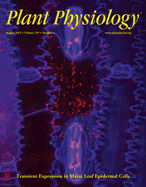Photosynthetic organisms need copper for cytochrome oxidase and for plastocyanin in the fundamental processes of respiration and photosynthesis. However, excess of free copper is detrimental inside the cells and therefore organisms have developed homeostatic mechanisms to tightly regulate its acquisition, sequestration, and efflux. Herein we show that the CopRS two-component system (also known as Hik31-Rre34) is essential for copper resistance in Synechocystis sp. PCC 6803. It regulates expression of a putative heavy-metal efflux-resistance nodulation and division type copper efflux system (encoded by copBAC) as well as its own expression (in the copMRS operon) in response to the presence of copper in the media. Mutants in this two-component system or the efflux system render cells more sensitive to the presence of copper in the media and accumulate more intracellular copper than the wild type. Furthermore, CopS periplasmic domain is able to bind copper, suggesting that CopS could be able to detect copper directly. Both operons (copMRS and copBAC) are also induced by the photosynthetic inhibitor 2,5-dibromo-3-methyl-6-isopropyl-pbenzoquinone but this induction requires the presence of copper in the media. The reduced response of two mutant strains to copper, one lacking plastocyanin and a second one impaired in copper transport to the thylakoid, due to the absence of the P(I)-type ATPases PacS and CtaA, suggests that CopS can detect intracellular copper. In addition, a tagged version of CopS with a triple HA epitope localizes to both the plasma and the thylakoid membranes, suggesting that CopS could be involved in copper detection in both the periplasm and the thylakoid lumen.
Artículo del mes
The CopRS Two-Component System Is Responsible for Resistance to Copper in the Cyanobacterium Synechocystis sp. PCC 6803
Joaquín Giner Lamia, Luis López Maury, José Carlos Reyes, Francisco Javier Florencio Bellido
Plant Physiology, 2012, Vol. 159, 1806-1818IBVF



 English
English